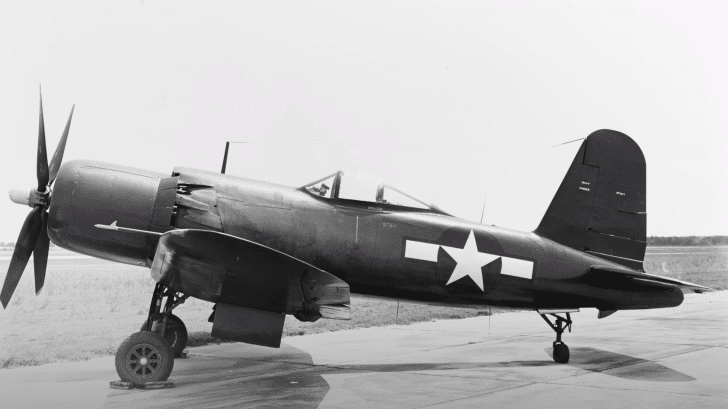In this video, Museum of Flight’s Senior Curator, Matthew Burchette, walks us on a 2-for-1 special of their museum’s Corsair and their ultra-rare Super Corsair.
Premier WWII Fighter
Vought’s F4U Corsair is considered the premier Navy and Marine Corps fighter of WWII. Its prototype, XF4U-1, made its first flight on May 29, 1940, becoming the first US single-engine fighter to fly faster than 400 miles per hour.

While initially designed as a carrier-based fighter, it entered combat not with the US Navy but with the US Marine Corps, flying from small South Pacific Islands rather than aircraft carriers. In late 1944, it became one of the most capable carrier-based fighters of the US Navy by racking up an impressive 11:1 kill ratio.
Bent-Wing Bird
Engineers designed the plane around Pratt and Whitney R-2800 Double Wasp radial engines and utilized a relatively large Hamilton standard propeller that turned power into speed. However, this change made it challenging for pilots to see over the plane’s nose.

Another design hurdle was figuring out how to keep the huge prop away from the carrier deck while still having a landing gear strong enough to survive hard landings.
So, the bent-wing idea was introduced. The bend let them develop shorter, stronger gear for carrier landings, but still keep the large prop off the deck. The Corsair’s unusual wing gave it a distinctive shape, reducing drag and allowing the bent-wing bird to fly faster.
Long Production Runs
After WWII, the Corsair served exclusively as a fighter/bomber during the Korean War.

Its extensive production line ran between 1942 and 1953, with over 12,00 planes built, making it one of the longest of any US piston engine fighter ever.
The FG1D Corsair
FG-1D Corsair – not an F4U? The warbird featured in the video is actually called an FG-1D instead of an F4U. This is because this particular plane was built by Goodyear, not Vought. Companies such as Goodyear and Brewster were tapped to develop the fighter to get more of them in the air much quicker.

The Museum of Flight’s Corsair was delivered to the US Navy in April 1945 and was assigned to USS Intrepid. On July 29, 1950, Commander Ralph Millison and Ensign Stanley Hayes’ planes collided during a routine flight over Lake Washington. Although both pilots survived, their planes sank to the bottom of the lake.
Millison’s aircraft was then bought to the surface in 1983 and was restored in good condition.
The “Super” Corsair
Another impressive Corsair that the museum has is the Goodyear F2G Corsair. Referred to as the “Super” Corsair, it was developed by Goodyear in 1944 as an offshoot of Vought’s F4U Corsair.

The plane was intended to be a low-level interceptor equipped with a 28-cylinder, four-row Pratt and Whitney R-4360 air-cooled radial engine. Engineers added a gearbox to keep the propeller in the butter zone and a supercharger to force air into the massive engine. This added 50 percent more power during takeoff. Pretty impressive, don’t you think?



